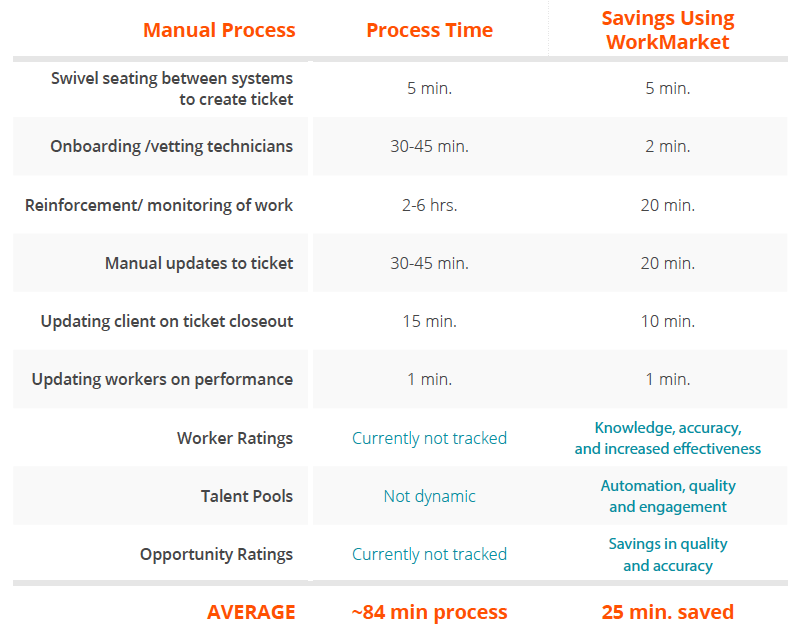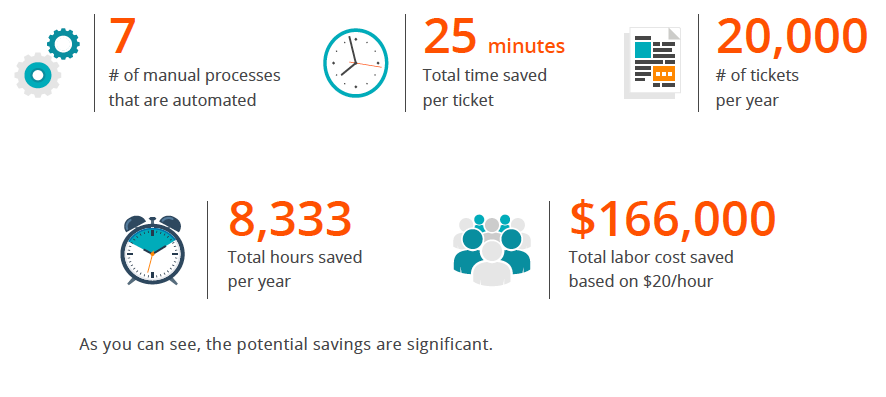
There is a growing trend towards a hybrid workforce that is a mix of both full-time employees and on-demand workers. These temporary workers are often called contractors, freelancers or gig workers. Hybrid workforces allow companies to be more nimble and efficient, while offering the highest quality of services and the fastest response times.
However, the use of more workers and more work assignments, or gigs, can create more complexity. Unfortunately, with more complexity comes even more use of different operating systems and management tools.
When you picture someone using all these different programs, don't you think of someone who is "swiveling" from tab to tab, computer to computer, or --gulp -- spreadsheet to spreadsheet?
By automating these processes, you can more easily take advantage of the benefits of an on-demand workforce without adding an extra burden your on organization. And you can get rid of your swivel chair while you're at it.
Eliminating the Swivel Chair
Automation can offer new and innovative ways to both manage and measure today’s expanding independent workforce. By implementing a centralized, cloud-based system on a single platform, you have the ability to add many new efficiencies and functions, especially when managing your on-demand workers, freelancers, and contractors. Perhaps you have even started your own digital transformation.
Without a system for organizing, managing, and paying your on-demand workers, there are many manual processes that need to occur in order to use contractors as part of your workforce. These include tasks such as those listed below.

As you can see, the time these manual processes take is substantial. Likewise, the time savings with the automation of the WorkMarket solution is also substantial. More on that in a bit.
Integration and Automation: Win-Win
Many organizations have already invested in systems such as project management, accounting, CRM, and ERP. When you need a way to manage on-demand workers, you want to ensure that the information seamlessly integrates into your other enterprise systems.
We can map all relevant data fields from your existing systems to WorkMarket, enabling two-way interactions. Using basic data such as customer info, work order number, and location, application programming interfaces (APIs) can be used to automatically call WorkMarket to create a work assignment and find a worker.
Here are 10 quick examples of assignments that can be easily automated in the gig economy.
In a similar fashion and once the assignment is complete, WorkMarket can then automatically send back the assignment details including any attachments or notes. The incident or work order number is used and stored by both systems to ensure all data is in synch.
WorkMarket can integrate with any platform that allows for API communication. Common platforms that many of our customers integrate with include ServiceNow, Workday, Salesforce, SAP, Autotask, Connectwise and Drop Box.
The ROI of Automation
It’s easy to agree on automation as a good thing in terms of saving time and money. You can also build a plausible business case for automation improving employee morale and job satisfaction, leading to greater retention and productivity.
However, just how much savings we talking about here? Based on our experience with many customers, we are confident that WorkMarket’s automation technology can handle the equivalent amount of mundane tasks performed by four full-time employees over a period of one year.
Let’s take a closer look at the numbers.

As you can see, the potential savings are significant.
Harness the Power of the Gig Economy
The gig economy is a huge opportunity — the chance to tap into skilled resources who are ready to deliver when and where you need them - and is impacting all businesses regardless of size or industry. There is much value and power in an agile (or hybrid) workforce that can work together with full-time employees and on-demand workers in an agile labor cloud.
*Ready to harness the power of the gig economy and eliminate the swivel chair? Check out the power of automation!



